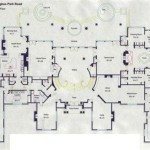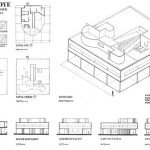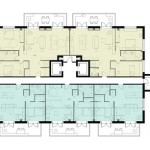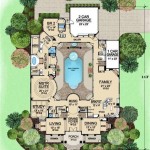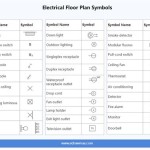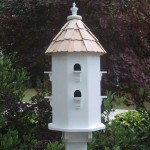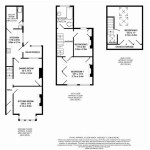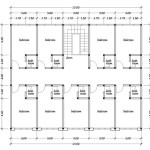Shingle Style House Plans: Small Scale Elegance
The Shingle Style, a distinctly American architectural movement that flourished from the late 19th century into the early 20th century, is characterized by its use of wood shingles to create a continuous, textured exterior surface. While often associated with grand coastal estates, the principles of the Shingle Style can be successfully adapted for smaller homes, offering a unique blend of historical charm and modern functionality. Careful planning and design considerations are essential when downsizing the Shingle Style to ensure the essence of the architecture is preserved while meeting the requirements of a smaller footprint.
This architectural style is recognized for its flowing forms, asymmetrical compositions, and integration with the surrounding landscape. Key features include expansive porches, wide eaves, and gambrel or gable roofs clad in natural wood shingles. The interior spaces often connect seamlessly, providing a sense of openness and connection to the outdoors. Adapting these elements to a smaller scale involves a careful balance of proportion, materiality, and spatial arrangement.
Key Point 1: Preserving the Shingle Style Aesthetic in Smaller Homes
Maintaining the characteristic aesthetic of the Shingle Style is paramount when designing smaller homes. This involves a strategic approach to incorporating key architectural elements without overwhelming the structure. The use of natural wood shingles, typically cedar, is a defining feature. On a smaller house, the selection of shingle size and exposure can significantly impact the overall impression. Smaller shingles with a tighter exposure can create a more refined and less imposing appearance, suitable for a compact design. The meticulous application of the shingles, ensuring uniform alignment and a textured surface, is crucial for achieving the desired effect.
Rooflines play a significant role in defining the Shingle Style. While expansive gambrel roofs are common in larger versions, smaller homes may benefit from a simpler gable roof or a modified gambrel design that maintains the desired curves without dominating the structure. Overhanging eaves, another characteristic feature, should be carefully proportioned to provide adequate protection from the elements while remaining in scale with the house. Porches, often a focal point of Shingle Style homes, can be incorporated as smaller, more intimate spaces, perhaps as a covered entry or a small veranda.
Window selection is also important for preserving the architectural integrity. Double-hung windows or casement windows, often with small divided lights in the upper sash, are common in Shingle Style homes. The size and placement of the windows should be carefully considered to maximize natural light while maintaining the visual proportions of the facade. The trim around the windows and doors should be simple yet elegant, often featuring flat boards with a slight overhang.
The judicious use of color is also important. Traditionally, Shingle Style homes were painted in natural earth tones, such as browns, grays, and greens, to blend with the surrounding landscape. These colors can be adapted for smaller homes while maintaining a sense of warmth and sophistication. Alternatively, the shingles can be left to weather naturally, creating a silvery-gray patina over time. Trim colors should complement the shingles, often using a lighter shade of the same color or a contrasting neutral tone.
Key Point 2: Optimizing Interior Space in Small Shingle Style Homes
Small Shingle Style house plans require careful consideration of interior space to maximize functionality and comfort. Open floor plans are often employed to create a sense of spaciousness, allowing natural light to penetrate deeper into the home. This approach involves minimizing the number of interior walls and creating interconnected living spaces, such as a combined living room, dining area, and kitchen.
Strategic use of vertical space can also enhance the feeling of spaciousness. Vaulted ceilings or raised ceilings can create a more open and airy atmosphere, particularly in the main living areas. The incorporation of dormers can provide additional headroom and natural light in attic spaces, allowing them to be used as bedrooms or home offices. Well-placed skylights can also brighten interior spaces and reduce the reliance on artificial lighting.
Built-in storage solutions are essential for maximizing space in smaller homes. Custom cabinetry, shelving units, and window seats can provide ample storage without taking up valuable floor space. The strategic placement of these features can also help to define different areas within an open floor plan. For example, a built-in bookcase can serve as a partial divider between the living room and dining area.
The selection of furniture is also important. Smaller-scale furniture pieces are more appropriate for smaller homes, preventing the spaces from feeling cramped. Multifunctional furniture, such as sofa beds or storage ottomans, can also help to maximize space utilization. The use of light-colored fabrics and finishes can also contribute to a brighter and more open atmosphere.
The design of the kitchen and bathrooms should prioritize efficiency and functionality. Compact appliances, such as smaller refrigerators and dishwashers, can save space without sacrificing performance. Smart storage solutions, such as pull-out shelves and drawer dividers, can optimize the use of cabinet space. In bathrooms, wall-mounted sinks and toilets can create a more open and spacious feel.
Key Point 3: Adapting Shingle Style Detailing for a Modern Lifestyle
While maintaining the historical essence of the Shingle Style is important, it is also necessary to adapt the design to meet the needs of a modern lifestyle. This involves incorporating contemporary amenities and technologies while preserving the architectural character of the home. The integration of modern appliances, lighting systems, and home entertainment systems requires careful planning to ensure they blend seamlessly with the design.
Energy efficiency is an important consideration in modern home design. Incorporating energy-efficient windows, insulation, and HVAC systems can reduce energy consumption and lower utility bills. Solar panels can be integrated into the roof design to provide renewable energy, further enhancing the sustainability of the home. The placement of windows should also be carefully considered to maximize natural light and minimize heat gain in the summer and heat loss in the winter.
The design of outdoor spaces should also complement the architectural style of the home. Patios, decks, and gardens can extend the living space and provide opportunities for outdoor recreation and relaxation. The use of natural materials, such as stone and wood, can create a seamless transition between the interior and exterior spaces. Landscaping should be carefully planned to enhance the architectural features of the home and create a sense of privacy and tranquility.
Modern kitchens often feature open layouts with islands and breakfast bars, which can be incorporated into Shingle Style homes while maintaining a sense of historical charm. The use of natural materials, such as wood countertops and stone backsplashes, can complement the architectural style. Modern appliances can be concealed behind custom cabinetry to maintain a consistent aesthetic.
Bathrooms can be updated with modern fixtures and finishes while still retaining a sense of warmth and elegance. The use of natural stone tiles, wood vanities, and freestanding bathtubs can create a luxurious and relaxing atmosphere. Modern lighting fixtures can be incorporated to provide ample illumination while also enhancing the architectural style.
The integration of smart home technology can enhance the convenience and comfort of a Shingle Style home without compromising its aesthetic appeal. Smart thermostats, lighting controls, and security systems can be seamlessly integrated into the design, providing homeowners with greater control over their home environment.

Shingle Style Houses Houseplans Blog Com

Plan 93058el Stunning Shingle Style Home Architectural Design House Plans Small

Small Cottage House Plans In Size Big On Charm

Shingle Style Home Bunch Interior Design Ideas

Narrow Lot Beach Cottage Florida House Plans

Standout Small Cottage Designs Shingled Sanctuaries

Shingle Style House Plans Designs For Builders

Cottage Style House Plan 1 Beds Baths 569 Sq Ft 45 334 Plans

Standout Small Cottage Designs Shingled Sanctuaries

Shingle Style Floor Plans 90 150 Small Cottage House Homes

